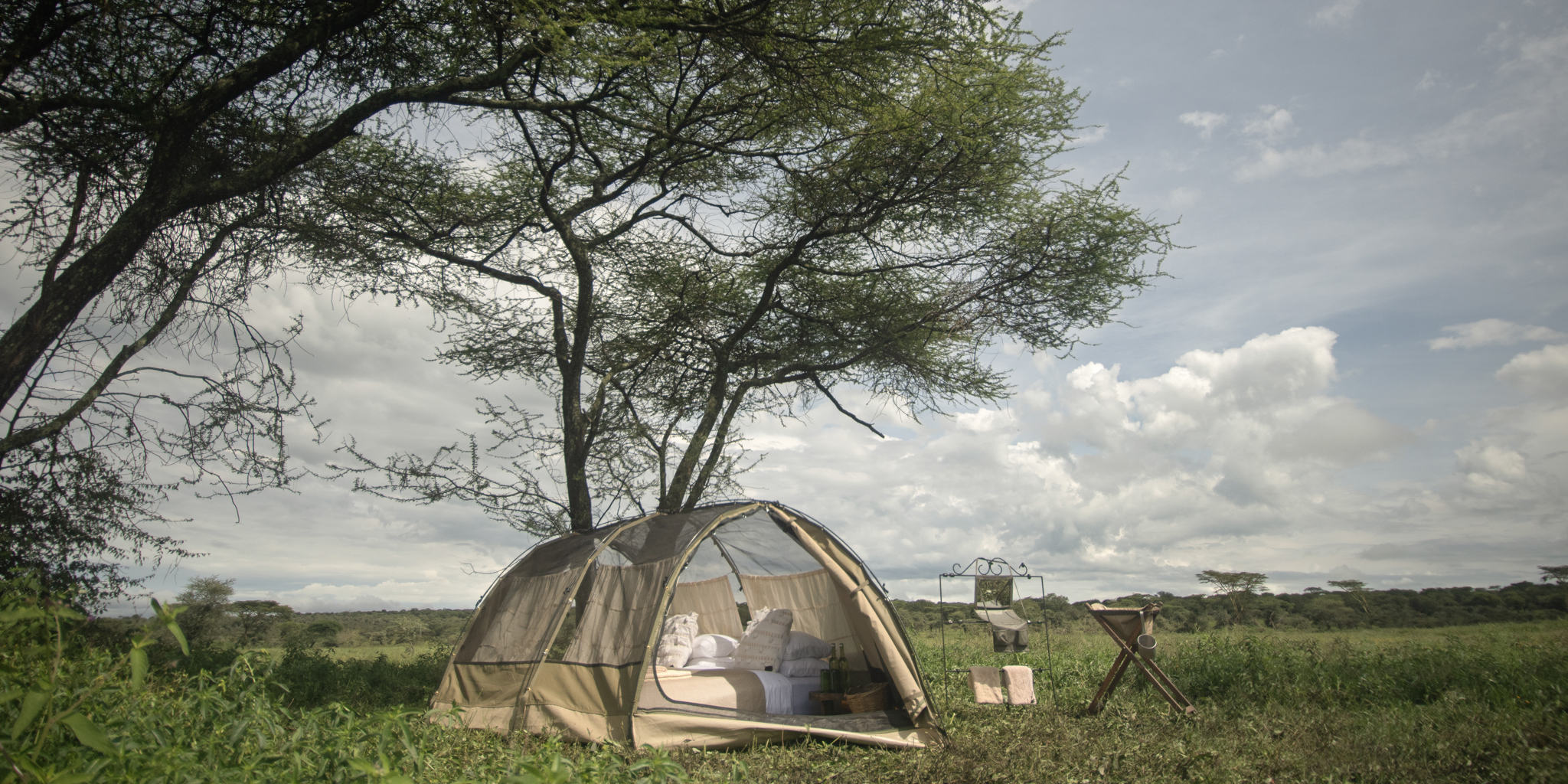OVERVIEW:
Wayo Africa has transformed walking in northern Tanzania with its remote and adventurous experiences – and this is the most immersive yet! Wayo Walking is specifically for private groups and families. You can enjoy a ground-level safari and set up anywhere from Tarangire National Park and the Ngorongoro Conservation Area, to the plains of the Serengeti. Walking safaris take you closer to the action than being in a vehicle, giving you an entirely fresh perspective of the land you’re in and the wildlife around you. As well as seeing big cats and other predators engaging with the migratory herbivores, you also get the chance to connect with the smaller residents of Africa’s most famous park – insects, plants, dung! It’s a true tracker’s paradise. Treks can last from 3 to 14 days, and your exact route is decided only 1–2 weeks prior to departure, ensuring you are always in the best game location as per up-to-date reports on the ground. The camp has seven specially designed ‘star tents’, treating you to a view of the stars from the comfort of your bed. The camp usually moves every day, so guests can fully explore each area. Due to the lightweight nature of the camp and Wayo’s great conservation credentials, there’s access to regions of the Serengeti where you can go for days without seeing a vehicle! This is truly Africa in the wild – simple, rustic, and a return to nature like never before.
ACCESS & LOCATION:
This is for you to decide! This highly mobile, bespoke safari can be set up in an area of your choosing – be it Tarangire with its fantastic populations of elephant, the Ngorongoro Conservation Area with its swathes of beautiful untouched walking areas including Lake Natron and Ol Doinyo Lengai, or the mighty Serengeti for a chance to witness the Great Migration. You can even use Wayo Walking for all three of these on your safari, if you wish. The experience is incredibly flexible, opening out northern Tanzania and its lesser-trodden paths like never before! And all this while accompanied by your incredible guides.
Your actual trekking route is decided during the days before you travel, according to the real-time movement of animals. Please chat with one of our consultants about which park might be best for your group. All locations have been chosen for their remoteness, well away from the busy areas. There are exciting opportunities to experience these beautiful parks without crowds, as they should be.
Should you decide on the Serengeti, there are three main regions covered during the course of the year. From mid-December to March, the camp is in the south of the park for calving season. Hundreds of thousands of wildebeest and zebra amass here for the females to give birth during a sensational 2–3 week period in mid-February. From April to June, the camp sets up in the Central Serengeti as the herds are moving north – this is rutting season, with the males competing for dominance. Then, from July to mid-December, the base camp moves to the rolling hills of the north of the park just as the wildebeest are heading for the Mara river, always in search of fresh grassland. The Serengeti without other vehicles and on foot is unlike anything you will ever experience.
Wayo Walking can be accessed either via scheduled light aircraft flight to the local airstrip, followed by a short drive to the camp, or via road from your previous location, depending on where you're coming from.
ACCOMMODATION & FACILITIES AT WAYO WALKING CAMP:
The camp is lightweight to allow it to move regularly, yet you will find it comfortable and homely, and everything you need is provided by the wonderful Wayo staff. It offers up to seven 'star tents'. Each tent can house a double or a twin bed, all with a 4-inch mattress, cotton sheets, and cotton-covered duvets. The tents are brilliantly designed to provide views from your bed through gauze coverings, as well as the night sky. There is also a fly sheet to cover, just in case it rains! The washing facilities are set up in a separate tent, and they include shallow pit latrines and classic bucket showers. The hub of the camp is the campfire, where guests usually eat and drink, enjoy sundowners, and discuss the day’s viewing, all with the sounds of the bush around you and the night sky shining above you.
ACTIVITIES AT WAYO WALKING CAMP:
The camp is always perfectly placed to offer superb game viewing whichever park you choose. This is an exclusive and adventurous walking safari that’s unlike anything else currently offered in northern Tanzania. Extended walking safari is the main draw, but when hiring Wayo Walking Camp you can also do game drives, since you need your own private vehicle as part of the package. This is great should you need a rest, or just a change of scene and the option to go slightly farther afield.
-
Walking safaris
- Typically guests walk approximately 10 kilometers per day, sometimes on terrain that can be uneven and rocky – so be sure to bring great boots that are already worn in! On all walks you are accompanied by an armed ranger from the national park, as well as your guide from Wayo.
- Most of the walking is done in the morning, with an 06:30 start following a light breakfast. Your luggage and the camp are moved separately, so when you arrive at lunchtime at the new location, your belongings are there and the new camp is fully set up. They usually favor the great vantage point that kopjes can provide! After the morning walk, lunch will await you and it’ll be time to relax during the heat of the day. Afterwards, a further, shorter, early evening walk is offered, where you can enjoy sundowners and the sunset across the savanna, before returning to camp to cook fresh food over the open fire.
- Depending on your chosen park, location within that park, and time of year, wildlife species you can expect to see will vary. The Ngorongoro Conservation Area has less game, but is scenically dazzling with its lakes and volcanoes – and the cultural interactions here are genuinely authentic. Tarangire is famous for its incredible elephant populations in the dry season (July to October). The Serengeti is magnificent all year round, and you can expect sightings of the zebra and wildebeest that make up the throng of the Great Migration, plenty of big cats, hyena, other large herbivores such as rhino, elephant, and buffalo, as well as many smaller mammals that often go unnoticed when you’re in a vehicle! This is a classic African safari from a time gone by. Staff members at Wayo tell us that guests often enter an almost meditative state after a couple of days, as the impact of this true wilderness experience is taken in. -
Expertly guided game drives
- Should you wish to change things up, you can do drives with your guide. Among the highlights are lion, leopard, elephant, hyena, and buffalo. You can look out for smaller predators such as jackal, serval, civet, and the rare wild dog, while the large herbivore collection features giraffe, wildebeest, zebra, and an assortment of antelopes.
*This property is unfenced and located in a wildlife area, so large and potentially dangerous animals do pass through. If you opt to stay here, always be alert when walking around the camp and request for a member of staff to escort you if you have any concerns. Any guest is escorted after dark as a matter of course.
 USA
USA
 UK / International
UK / International
 CA
CA
 Australia
Australia










































































